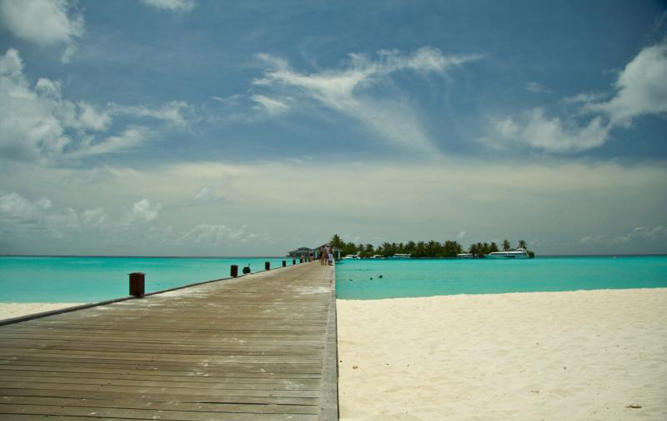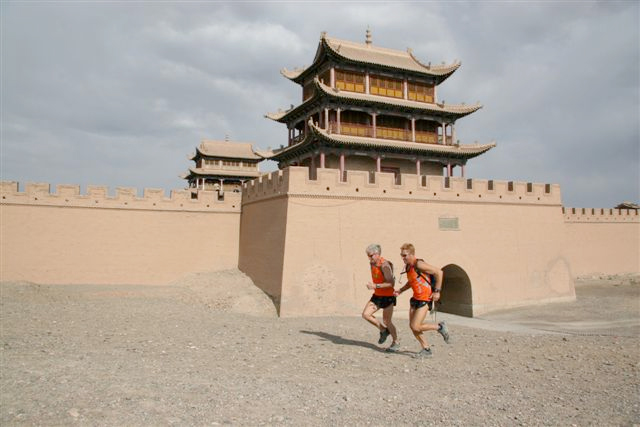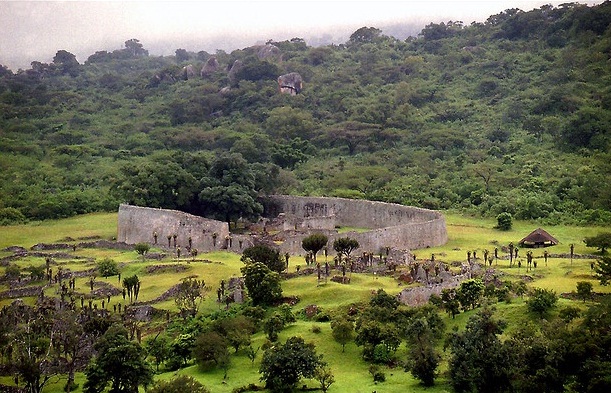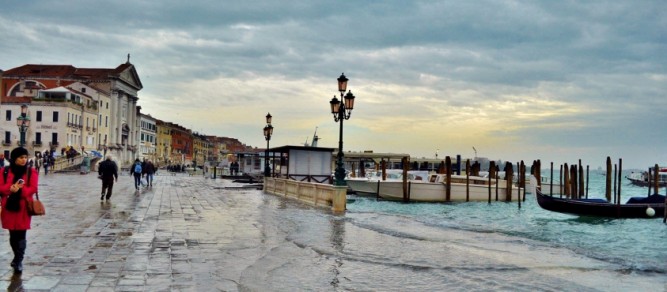Don’t assume those bucket-list places you’ve been thinking about visiting will be around forever. There are remarkable places on earth that, thanks to environmental changes, pollution or people, might not be in the same shape in another 50 years. Here are 10 of these places to visit before they disappear.
1. Escape to the Maldives
Indian Ocean
Why now?
If your holiday plan involves doing very little on a stilted deck overlooking azure water, the Maldives is the place. This archipelago of 1190 equatorial islands is created around 26 circular atolls that form two chains in the Indian Ocean and, with resorts on 110 islands, there are plenty of choices for unwinding. Baa Atoll is around 125km northwest of Malé and home to some of the Maldives’ richest coral systems.
It was made a Unesco World Biosphere Reserve in 2011, so conservation co-exists with sustainable tourism. Scuba diving is outlawed at many of the reefs, but at marine-protected Haniferu Bay snorkellers line up to swim with whale sharks and gliding manta rays between June and October. The problem is that many of the low-lying Maldives islands will soon be underwater, pristine beaches lost and corals depleted by rising temperatures. In 2013, the Intergovernmental Panel on Climate Change confirmed that global sea levels will continue rising during the 21st century at a faster rate.
Need to know
Paradise has a price – resorts operate on a full- or half-board basis, so aside from spa treatments and scuba diving fees, there are sometimes hidden costs for food and drinks (all imported) and water activi- ties. Maldivians expect tips for it all too. Resorts use speedboats or seaplanes to transport guests from the narrow Malé airstrip. The snorkelling is great, but take your own gear to avoid rental fees; if you’re a scuba diver, factor in 24 hours of pre- flight decompression. November to April is the best time to visit. COSTS: Simply Travel offers return flights from Johannesburg and seven nights at Vilu Reef Beach and Spa on South Nilandhe Atoll (including dinner and breakfast) from R29660 a person sharing (a December surcharge applies). www.simply-travel.co.za. Alternatively, you can dive the Maldives from a luxury yacht.
Related: Top 10 island breaks in Africa
Threats
Global warming may cause the ocean to engulf the islands because of their low levels.
Did you know ?
The Maldives were the first country in the world to hold an official presidential cabinet meeting underwater.
– contributed by Kim Maxwell
2.Climb The Great Wall of China
China
Why now?
I don’t remember how long we took to get to the top, only how staggered we were at the broadness of the wall once there – you don’t tend to think of walls as being wide. Winter’s icy sections made walk- ing progress on sloping bits quite tricky, but it was the experience of being on a remarkable structure that mattered.
The Great Wall of China as a singular concept is misleading because at least 16 defensive Great Walls were built between the fifth century BC and mid-17th century AD, undulating 50000 kilometres across China’s vast landscape. Most tourists visit the last and best-preserved wall, built in stages during the Ming Dynasty (1368 to 1644). Admire its solid configuration of snaking loops with beacon towers and you’ll understand why the World Monuments Fund considered the Ming Great Wall to have the best defensive system of the lot. Once the longest wall at 6300 kilometres, collectively the Ming ruins form the world’s largest cultural relic – but it’s a myth that it’s visible from the moon.
Sadly age, looting and seasonal erosion have left behind only a third of the original Ming Great Wall, posing one of the world’s great preservation challenges. The biggest threats are China’s relatively recent conservation policies, tacky shadow-of-the- wall tourism and increasingly affluent citizens who drive their cars to popular sections. Scale this treasure before it deteriorates further.
Need to know
Most guides target popular Badaling wall, 70 km from Beijing. The biggest complaints are the crowds and the vendors, so go early and try to be sidetracked by the enor- mity of the stone wall rising impressively along mountainous terrain. It’s a fair climb, or you can queue for the cable-car ride. Many travellers prefer the better- organised Mutianyu section, which operates a toboggan, cable car and chairlift (you can hike up too). Also near Beijing, Juyong Pass (or Juyongguan) scores points for being quieter. Its steep steps to the summit challenge fit travellers but re- ward with spectacular views. COSTS: SAA flies from Joburg to Beijing from R12000 return. China specialist www.tour-bei- jing.com offers various Great Wall tours and travel tips.
These three iconic and ancient structures still boggle the minds of modern engineers. The impressive limestone pyramids were built as graves for the ancient Egyptian Pharaohs and are still a popular tourist attraction.
Major threats
Unrestricted urban sprawl from Cairo and the tourist trade of the area are threatening the preservation of these ancient structures.
Did you know ?
This is the only one of the original 7 Wonders of the Ancient World that is still largely intact.
– contributed by Kim Maxwell
3. Raft Batoka Gorge Rapids at Victoria Falls
Zimbabwe
Why now?
Victoria Falls (one of the 20 best aerial views on the world) is among the few viable tourist revenue sources in economically troubled Zimbabwe, and the International Rafting Federation rates Batoka Gorge as one of the world’s best-known white-water rapid stretches.
So Zimbabwe and Zambia’s proposed collaboration to build a Batoka Gorge hydroelectric scheme for electricity generation on this middle Zambezi River section is worrying. A 2012 International Rivers report expressed concerns that plans for the proposed dam and hydroelectric power station were drawn up a decade ago, sidestepping probable climate changes including droughts and Zambezi flooding as well as the impact on river functioning and communities downstream.
Sign up for a day of rafting soon – if the project goes ahead, the dam will likely flood the gorge and drown the rapids that have made Vic Falls such an adrenaline-charged destination.
Need to know
Although subject to river fluctuations, the low-water rafting season (August to January) is the best time to feel the rush of the maximum rapids in a 25km stretch, including meaner, high-volume ones. Wear quick-drying clothes and strap-on waterproof sandals for climbing out of the gorge (minimum age is 15).
Costs
Various companies offer white-river rafting from around $140 an adult. Getaway Travel offers a three-night pack- age at Batoka Gorge Lodge near the falls with return flights from Joburg to Vic Falls Airport from R8960 a person sharing. 021- 530-3380, www.getaway.co.za/travel.
– contributed by Kim Maxwell
4. Go up the Tower of Pisa
Italy

The Tower of Pisa as seen from the Pisa Museo dell’Opera del Duomo (Cathedral Works Museum). Photo by Eric Meyer
Why now?
It’s tempting to succumb to fatigue at the idea of seeing yet another old European building. Perhaps that’s the time to break for a cappuccino to consider that the bell tower of Pisa has been leaning for a very long time. This gracious old lady has had an unfair share of construction trouble; seeing her stand should be reason enough to visit. When construction began in 1173, sinking foundations raised concerns after only three of the planned eight stories were built. Through the centuries, attempts at adjusting the tilt or reinforcing foundations have only made matters worse.
Pisa was declared a Unesco World Heritage Site in 1987, but closed in 1990 for safety reasons. After an engineering feat involving three years of manoeuvres using lead weights, steel cables and corkscrew drills, the tower’s lean was reduced by sinking a raised end of the foundations. Laser technology also scrubbed grime from more than 24000 blocks of stone. Pisa reopened in 2001, affording entry to four million tourists a year ever since. The tower’s future is looking rosier despite no additional construction, after more vertical in- cline was regained in the past 12 years. Those structural tweaks may have stabilised the tower permanently – the organisation behind the restoration has given Pisa the green light for 200 years. The vulnerability lies only in the crumbling masonry, especially the lower stories, where air pollution and salty air merge with the pressure of centuries-long leaning.
Need to know
Yes, Pisa is popular but it’s worth climbing nearly 300 steps for the panoramic view. About 40 people go up at a time and children under eight aren’t allowed. Most visi- tors find a day trip sufficient as accommodation tends to be overpriced. If taking the train from Florence, it’s a comfortable 25-minute walk from Pisa station, aside from the buskers flogging goods en route. To avoid queues, buy entry tickets for €18 online at boxoffice-v2. www.opapisa.it/Turisti.
Costs
Return flights from Joburg to Florence on Alitalia start from about R15000. Alternatively, book a 15-day best of Italy tour.
– contributed by Kim Maxwell
5. Experience Lalibela’s underground churches
Ethiopia

Pilgrims sit around the rock hewn churches in much the same way you can imagine they have for hundred of years. Photo by Szerdi Nagy
Why now?
Ancient ruins such as Cambodia’s Angkor Wat and Peru’s Machu Picchu are well-known tourist hot spots, but Africa has a mysterious drawcard of its own. Ethiopia’s 11 underground churches at Lalibela form one of sub-Saharan Africa’s more astonishing man-made sites.
Created in the 12th century, these churches are monolithic, meaning each was carved from one solid red volcanic stone, from the top down. When Muslims conquered Jerusalem during the Crusader periods, King Lalibela created the churches as an alternative ‘holy land’ for Ethiopian Christians. Pilgrims have visited ever since. The World Monuments Fund and Unesco have kept an eye on Lalibela in recent decades, but this World Heritage Site isn’t in great shape. They’ve applied waterproofing solutions, improved drainage systems around the churches and tried to stabilise cracks and interior frescoes. In 2008, locals were unhappy when ugly protective roof shelters were installed over four churches to shield them from the elements. Go before more history is lost.
Need to know
Ethiopia celebrates Christmas on 7 January, which is the time to observe up to 50000 pilgrims participating in Lalibela’s religious rituals – or avoid if you don’t like crowds. Most visitors experience Lalibela as a peaceful, spiritual place. Wear comfy shoes for tackling rocks and paths; you’re expected to remove them inside the functioning churches. A US$50 (about R500) entrance fee cov- ering all 11 churches is valid for four days. Find tips at bradtethiopiaupdate.wordpress.com.
Costs
Ethiopian Airlines flies from Johannesburg to Lalibela via Addis Ababa from around R10000 return.
– contributed by Kim Maxwell
6. Dive Raj Ampat in the Coral Triangle
Indonesia
Why now?
The Coral Triangle is a diverse marine area spread across Malaysia, Indonesia, the Philippines, Papua New Guinea, Timor Leste and the Solomon Islands. These six million square kilometres are home to 75 percent of the world’s coral reef species, six of seven sea turtle species and more than 2200 reef fish types.
The Intergovernmental Panel on Climate Change reported in 2013 that the world’s oceans have absorbed about 30 percent of global carbon dioxide emis- sions and water temperatures have warmed. Corals are threat- ened by ocean warming and acidification, which is why the near-pristine Raja Ampat reef dives are so special.
The corals in this marine-protected archipelago of 1500 islands near Indonesia’s West Papua province are the richest in the world, and many species have so far proven extra resistant to rising ocean temperatures. Raja Ampat’s remoteness makes it the marine biodiversity equivalent of the Amazon. It’s dubbed the ‘species factory’ thanks to deep-sea Indian and Pacific Ocean currents intersecting and funnelling nutrients into fringing coral reefs and over natural walls dropping away to clear blue 40-metre depths, forming the base of a food chain attracting sharks, manta rays and colourful fish.
Need to know
Raja Ampat’s dive sites include Manta Ridge for manta rays, Wofoh Island’s sheer coral wall, diverse fish at Kri Island, and coral gardens at Yangelo Island. The best time is November to April; an advanced diving qualification is advisable. Liveaboard boats, usually accommodating 18 to 20 divers in en-suite twin bedrooms, are better at reaching remote dive sites.
Costs
Pro Dive arranges customised liveaboards at Raja Ampat (it also books land-based resorts) with return flights from Joburg to Sarong via Singapore, Jakarta and Makassar, seven nights’ accommodation, dives and meals from R44700 a person sharing. www.prodive.co.za
– contributed by Kim Maxwell
7. Explore the Great Zimbabwe Ruins
Zimbabwe
Why now?
Great Zimbabwe, from the Shona ‘dzimba dzembabwe’ for house of stone, is the ruined city after which the country is named. It’s a must-see African World Heritage Site (and also one of the 10 most fascinating lost cities of the world), especially as Zimbabwe’s shaky political and economical set- up means future preservation is never guaranteed.
The ruins were built between the 11th and 15th centuries by ancestors of the Shona, and stretch 800 hectares from the southeastern hills near Masvingo. What sets Great Zimbabwe apart from other ruins is the scale of its formations. The Great Enclosure is the most formidable, extending outwards for 250 metres, with some walls rising 11 metres high. The Metropolitan Museum of Art named it the largest ancient structure south of the Sahara Desert. Equally distinctive is the construction style favouring flow- ing curves. Granite blocks from the surrounding hills were fitted into mortar-free walls, stones laid on top of one another, each layer slightly more recessed to produce a stabilising inward slope. Walls created later fit more evenly, stone bricks forming chevrons and other intricate patterns.
Need to know
Unless you’re a history buff, hire one of the inexpensive guides to do justice to the Great Zimbabwe ruins as the on-site information is poor. Wear shoes suitable for hilly paths, rocks and excavations and you’ll be rewarded with views over the green valley floor. Wildlife reserves in the area are worth seeing too. The ruins are at Mutirikwi National Park, about 300 kilometres from Harare. See www.nmmz.co.zw.
Costs
British Airways flies from Joburg to Harare from around R3900 return.
– contributed by Kim Maxwell
8. Admire the Taj Mahal
India
Why now?
You’ve seen it in thousands of photos, but noth- ing comes close to the real thing. The Taj Mahal was built in Agra by emperor Shah Jahan as a tomb for his favourite wife, Mumtaz Mahal. She died in 1631 after giving birth to his 14th child and Shah spent more than 15 years creating her mag- nificent tomb. The main dome is 44 metres high and is the central structure of nearly 17 hectares of buildings, courtyards and sprawling gardens.
Although inspired by Shah’s Islamic vision of paradise, architecturally the Taj merges Indian, Hindu, Islamic, Central Asian, Persian and European in- put. The lustrous white marble and sandstone is inset with stones such as jade, coral and rubies.
Yet the effects of time and of India’s booming population are showing. Although Agra’s nearby factories were shut down and vehicle emissions reduced, air contamination, climate and a polluted river have advanced the building’s exterior disinte- gration and yellowing stains.
The Taj’s foundations may also be sinking towards the Yamuna River. Around 40000 people visit on some days and there is talk that visitor numbers could be restricted. Go soon.
Related: 10 things you need to know about India
Need to know
Visit early in the morning (the western and eastern gates open at sunrise) for the best light and tempera- tures and the smallest crowds. The mausoleum has the longest queues. For environmental reasons, you’ll reach the Taj on foot or via an electric bus, as vehicles aren’t allowed within 500 metres of the monument. tajmahal.gov.in.
Costs
SAA flies from Joburg to Agra from R12000 return.
– contributed by Kim Maxwell
9. See Venice before it floods
Italy
Why now?
It’s one of northeast Italy’s finest places. Few other cit- ies provide the chance to get lost eating gelato while wandering arteries of alleyways, to take in works from Renaissance masters, and to float under balconies and bridges where crumbling walls show the patina of age. It was built in the fifth century AD and is spread over 118 small islands. Yet Venice is slowly being submerged by water, so you’d do well to see its sights before it’s too late. But whether you’re being talked into a roman- tic gondola serenade along bus- tling canals or fighting for the obligatory snap from the heaving Rialto Bridge, it’s hard to ignore the hordes. An estimated 17 million people visit Venice a year, and movement in and out of the Guidecca Canal on cruise liners forms part of the problem.
Venice sits on a fragile lagoon polluted by people, industry and toxic rivers. Mobile water barriers are finally being installed to assist during the periodic flood- ing, but the Mediterranean’s rising levels remain a risk. City pavements have already been lifted to capacity and bricks in centuries-old buildings replaced thanks to water rising by capil- larity. Now it’s rumoured that damp is having an effect on the Byzantine mosaic treasures in- side St Mark’s Basilica. Experts agree that it’s not a question of whether or not Venice’s water levels will rise to unsustainable levels but when.
Need to know
If a gondola ride on the Grand Canal seems pricey, use the affordable, livelier waterbus vaporettos. Multi-day passes allow hopping on and off. You won’t want to miss the iconic St Mark’s piazza and Basilica; just be aware that you’ll be elbowing tourists during the day, or paying dearly for a café table at night. www.basilicasanmarco.it.
Read more: Top 10 things to do in Venice
Costs
Emirates flights from Joburg to Venice via Dubai are from about R8670 return.
10. Ice-trek the Perito Moreno Glacier
Argentina

The Perito Moreno Glacier is one of only three Patagonian glaciers that is holding its ground, for now. Photo by Neil Moralee
Why now?
In Argentina’s starkly beautiful Patagonia region, a glacier called Upsala is melting rapidly. Sharing the same ice field, Perito Moreno is one of South America’s larg- est glaciers, and it’s holding ground – for now.
If your visit to Los Glaciares National Park is timed well, the monumental Perito Moreno Glacier puts on a spectacle of nature every four to five years with a dramatic collapse, its icy base succumbing to pres- sure after forming a natural bridge to the other side of Lake Argentino.
It’s estimated that all the world’s glaciers produce enough water to raise sea levels by 60 centimetres. Glaciologist Tad Pfeffer, co-authoring a NASA 2013 glacier study, said people often focus on the huge melting ice sheets covering Greenland and Antarctica, yet collectively smaller global glaciers are losing equal amounts of ice mass. He likened glaciers to a little bucket with a huge hole in the bottom: ‘While there’s ice in those glaciers, it’s a major contributor to sea level rise.’
Need to know
Aside from dazzling views accented by the sounds of cracking and shudder- ing ice, the biggest thrill at Perito Moreno Glacier is a guided ice trek. Larger groups spend a few hours mini-trekking (August to May); smaller teams do full- day big ice treks (September to April) through icy caves and crevasses (good fitness required). Crampons are supplied for shoes, but take sunscreen, lunch, waterproof clothing and gloves at any time of year.
Costs
SAA flies from Joburg to Buenos Aires, and Aerolineas Argentinas flies to El Calafate (around R15000 return for both). Go ice-trekking with Hielo y Aventura, from 670 pesos (about R1165) for mini treks and 1070 pesos (about R1860) for big ice treks (ex- cludes El Calafate transfers). www.hieloyaventura.com.
























